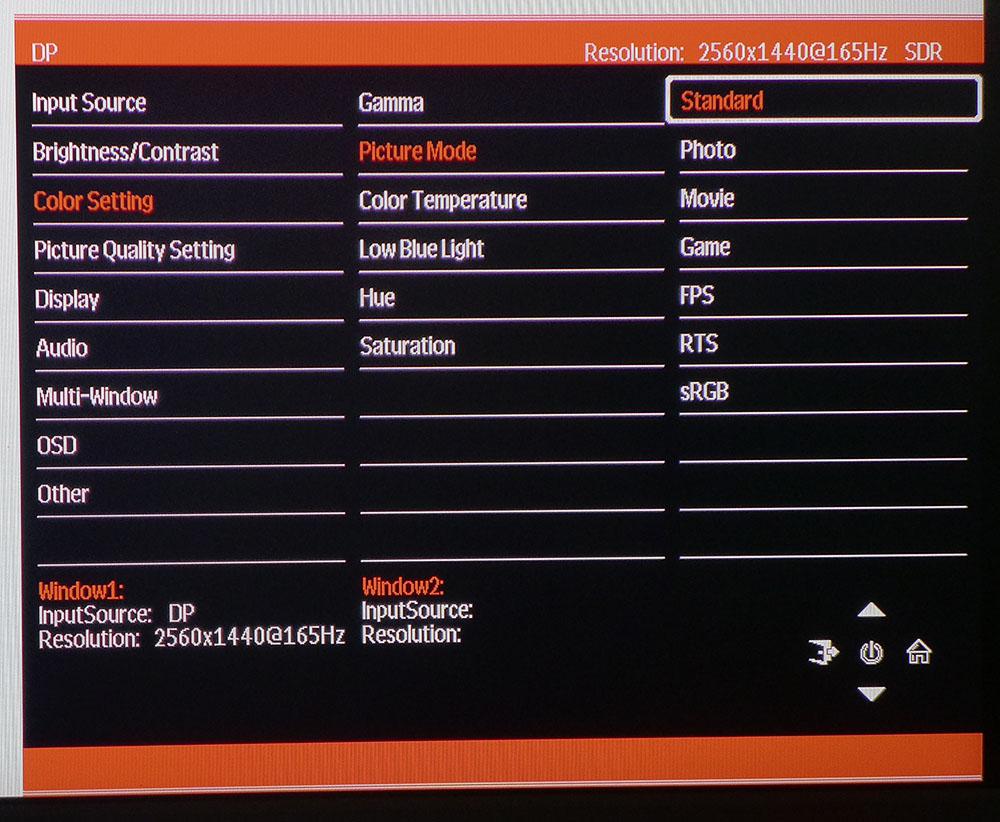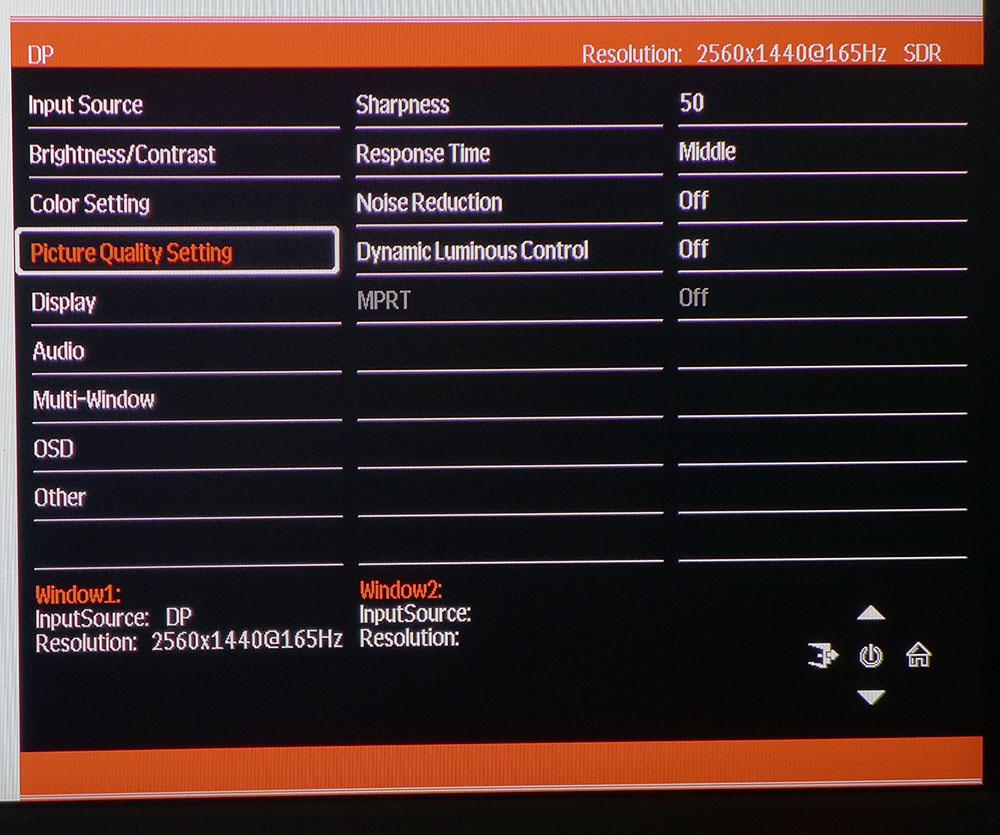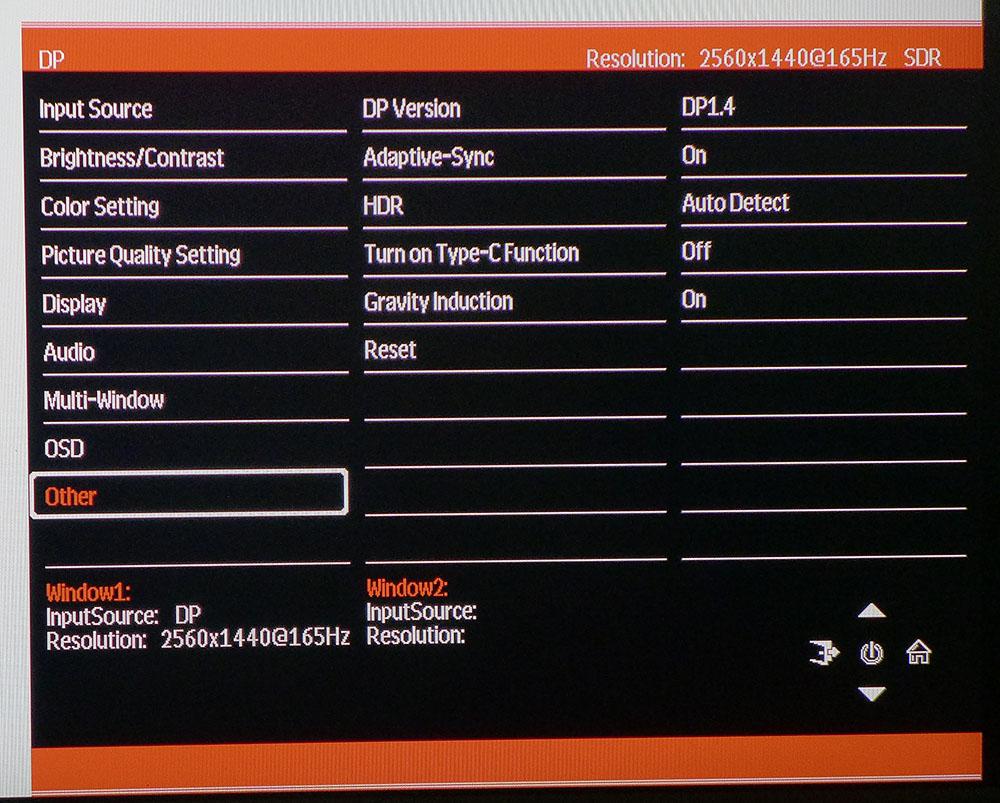Tom's Hardware Verdict
For $350, it’s hard to fault the Monoprice’s IGZO gaming monitor in any way. It’s not perfect but easily performs as well or better than monitors costing much more. With a 165 Hz refresh rate, Adaptive-Sync and a large color gamut, it delivers a better-than-expected gaming experience.
Pros
- +
+ Sharp, colorful image
- +
+ Excellent contrast for an IPS panel
- +
+ Top-shelf overdrive and video processing
- +
+ Solid build quality
Cons
- -
No extra contrast in HDR mode
- -
Limited stand adjustments
- -
No speakers or USB ports
Why you can trust Tom's Hardware
LCD panel technologies have become something of an alphabet soup with terms like TN, IPS, VA, AHVA, SVA and so on now common among the best gaming monitors. One abbreviation we haven’t heard in a while is IGZO. It stands for Indium Gallium Zinc Oxide, which is a material, not a technology. Confused? We’ll try to make it clear as we review the Dark Matter by Monoprice 27-Inch Gaming Monitor (42892).
Typical LCD panels are based on a substance called amorphous silicon. That’s the substrate used in the semiconductors that comprise the individual sub-pixels of an LCD panel. IGZO material’s chief benefit is lower power consumption. Of course, since the chief consumer of electricity in a monitor is the backlight, basing the pixel array on a different material isn’t going to make a significant impact on your electric bill. But by applying the same power characteristics to an IGZO panel, it should exhibit faster panel response, in theory. IGZO can be used with any panel type, but we’ve only seen it employed with an IPS (in-plane switching) pixel structure.
Monoprice’s Dark Matter monitor is also a 1440p screen with a 165 Hz refresh rate that can overclock to 180 Hz, as well as HDR, DCI-P3 color and Adaptive-Sync. It’s part of a very crowded category. 27-inch QHD gaming monitors are very popular because they represent an ideal balance of image quality, value and performance. You get a lot of bang for the buck, and Monoprice’s IGZO monitor takes things further with an extra colorful display currently priced at $350.
Dark Matter by Monoprice 27-Inch Gaming Monitor (42892) Specs
| Panel Type / Backlight | IGZO-IPS / W-LED, edge array |
| Screen Size / Aspect Ratio | 27 inches / 16:9 |
| Max Resolution & Refresh Rate | 2560 x 1440 @ 165 Hz |
| Row 3 - Cell 0 | 180 Hz w/overclock |
| Row 4 - Cell 0 | Adaptive-Sync: 48-165 Hz |
| Native Color Depth & Gamut | 10-bit (8-bit+FRC) / DCI-P3 |
| Row 6 - Cell 0 | HDR10, DisplayHDR 400 |
| Response Time (GTG) | 1ms |
| Brightness | SDR: 300 nits |
| Row 9 - Cell 0 | HDR: 400 nits |
| Contrast | 1,000:1 |
| Speakers | None |
| Video Inputs | 1x DisplayPort 1.4a |
| Row 13 - Cell 0 | 3x HDMI 2.0 |
| Row 14 - Cell 0 | 1x USB-C |
| Audio | 3.5mm headphone output |
| USB 3.0 | None |
| Power Consumption | 25.5w, brightness @ 200 nits |
| Panel Dimensions WxHxD w/base | 24.4 x 18.8 x 9.3 inches (620 x 478 x 236mm) |
| Panel Thickness | 2.5 inches (64mm) |
| Bezel Width | Top/sides: 0.4 inch (11mm) |
| Row 21 - Cell 0 | Bottom: 0.7 inch (18mm) |
| Weight | 18.6 pounds (8.4kg) |
| Warranty | 3 years |
We previously saw IGZO technology in 2014 with Sharp’s early Ultra HD monitors, and in fact, Monoprice is using a Sharp-made part here. Obviously, it has managed to come in at a very attractive price point. To answer the first question, yes, the 42892 uses a bit less power than other 27-inch 1440ps panels we’ve seen lately: 5-10W less at 200 nits brightness.
The monitor isn’t certified by Nvidia or AMD for their screen tear-fighting technologies. A Monoprice told us that the monitor uses “an open-source Adaptive-Sync that works well with FreeSync and G-Sync. But this monitor is not certified by Nvidia or AMD due to the time it takes to get certification.” We got both G-Sync and FreeSync to work on the screen well.
The question of speed is answered with a native 165 Hz refresh rate. 180 Hz is available too, but you’ll have to give up Adaptive-Sync to use it. The 42892 has a superb overdrive, so we kept it at 165 Hz for our testing and were satisfied with its response and performance.
HDR10 signals are supported, and the 42892 is DisplayHDR 400 compliant, which we confirmed in our tests. There isn’t an effective dynamic contrast option though, so you won’t be seeing a major increase in contrast when looking at HDR content.
Get Tom's Hardware's best news and in-depth reviews, straight to your inbox.
Assembly and Accessories
To assemble the Dark Matter gaming monitor, you’ll need a Phillips-head screwdriver. The base and upright are made from cast aluminum and bolt together sturdily. You then bolt the stand to the panel, which has a removable adapter that snaps into place. If you remove it, you’ll find the 75mm VESA mount. Monoprice includes four large fasteners for use with aftermarket arms.
A small brick provides power, and the monitor also comes with a heavy duty DisplayPort cable.
Product 360
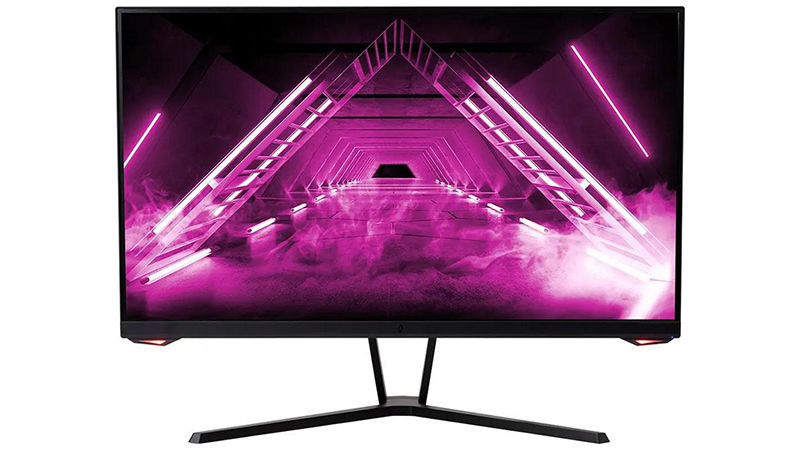
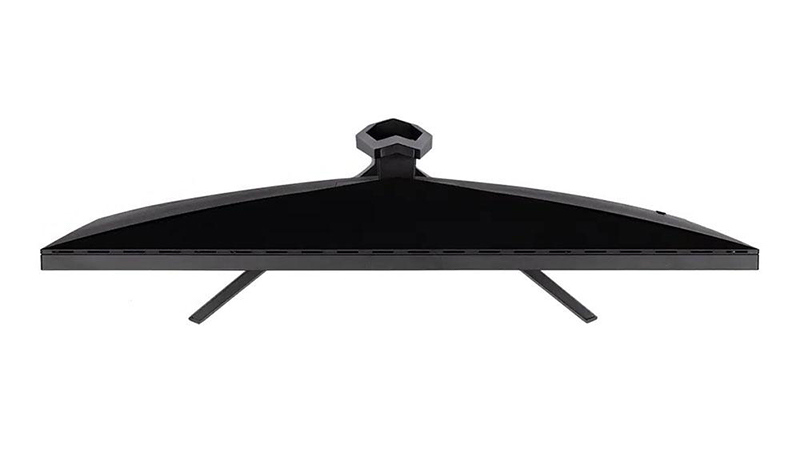
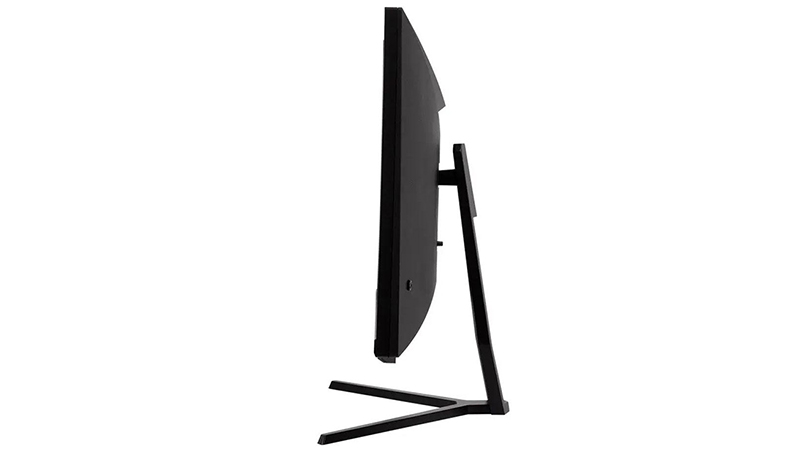
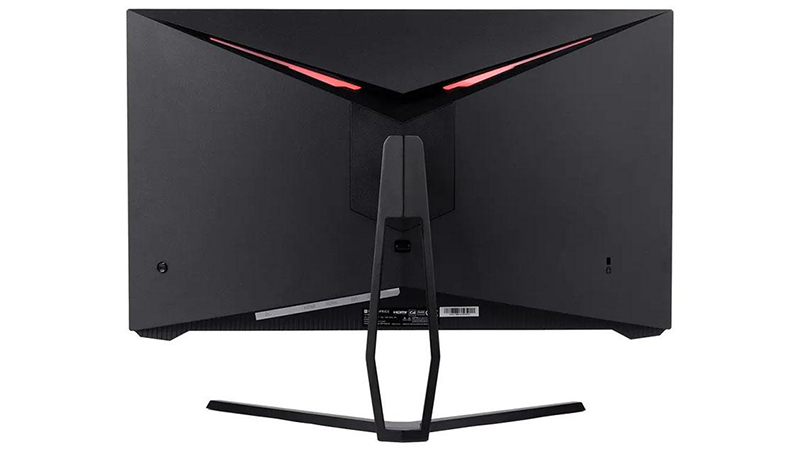
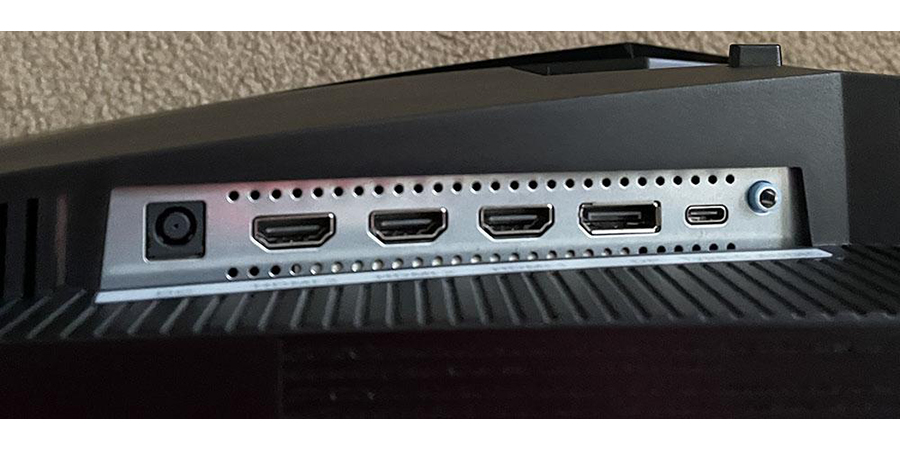
Monoprice’s IGZO gaming monitor has a flush bezel that’s 11mm wide around the top and sides and 18mm wide across the bottom. The Monoprice logo is barely visible in the center. More obvious are the two red LEDs in the lower corners. These reminded us of airplane landing lights -- distracting. They couple with two more LED strips in back to form the monitor’s lighting design. You can make them any color so long as it’s red, and fortunately, you can turn them off in the on-screen display (OSD) menu (more on that below). A tiny blue LED indicates power status and is solid for on and flashing for standby.
The stand is slender but very stiff and strong. It only offers a -5/30-degree tilt adjustment. Since you can’t raise the panel, you’ll have to tilt it upwards to meet your eyepoint or place it on a pedestal. Though light in weight, the 42892 is a sturdy package with good build quality.
From the side, you can see a panel of average thickness and the monitor’s single control, a joystick. It navigates the OSD easily and intuitively and feels like a quality piece. Also in back is a clearly labeled input panel with three HDMI 2.0 ports, a DisplayPort 1.4 and USB-C, which accepts video signals. There are no USB downstream ports for peripherals. You can use the 3.5mm audio jack with your best gaming headset or speakers because the monitor doesn’t have audio output of its own.
OSD Features
Clicking the 42892’s joystick once brings up a small disc-shaped quick menu. It offers a selection of aiming points as well as access to the full on-screen display (OSD) menu.
The main OSD is divided into nine sub-menus, each packed with features. After the Brightness/Contrast menu, which includes those functions, plus a black level control, is Color Setting. It offers seven picture modes and Standard is the default and best mode for all around use and gaming. The 42892 has a low blue light option, which alters brightness and color temperature for reduced eye fatigue while reading or browsing the web.
You’ll find video processing features in the Picture Quality Setting sub-menu. Sharpness should be left on its default setting of 50. Higher values add edge enhancement, while lower ones introduce softness. Response Time is the overdrive selection, and it works extremely well. The Middle setting smooths out motion blur without causing ghosting artifacts. We saw no benefits from either the Noise Reduction or Dynamic Luminous Control features.
If you’re looking for the Adaptive-Sync toggle, it’s in the Other menu. Also here is an HDR selector. You can turn it on manually or use Auto Detect, which switches modes automatically between SDR and HDR signals. That’s something we don’t often see in budget monitors.
Dark Matter by Monoprice 27-Inch Gaming Monitor (42892) Calibration Settings
Unlike most budget monitors, we were able to enjoy the Dark Matter monitor’s image without calibration. Aside from a slight gamma anomaly that mutes highlight detail a bit, there are no color accuracy issues that require attention. Still, with a few tweaks to the RGB sliders, we improved color depth. Gamma tracks closely to the 2.2 standard out of the box, but if you want a darker or lighter look, the monitor has presets from 1.8-2.6. Below are our recommended calibration settings for the Dark Matter by Monoprice 27-Inch Gaming Monitor (42892).
| Picture Mode | Standard |
| Brightness 200 nits | 70 |
| Brightness 120 nits | 45 |
| Brightness 100 nits | 37 |
| Brightness 80 nits | 30 |
| Brightness 50 nits | 16 (min. 22 nits) |
| Contrast | 49 |
| Gamma | 2.2 |
| Color Temp User | Red 49, Green 51, Blue 52 |
For HDR content, setting the HDR selector to Auto Detect does exactly that; it automatically switches modes between SDR and HDR. In HDR mode, there are no picture adjustments available, but color accuracy is reasonable with one issue we’ll note in our test results on page five.
Gaming and Hands-on
From the get-go, the Monoprice 42892 raised our expectations of how a budget monitor can look and perform. Ordinarily, displays like this are evaluated in a “for the class” fashion. That is, we observe that they perform well given their low price point. The 42892 breaks that mold.
The image in Windows is bright and colorful with solid contrast and sharp detail. Browsing the web and reading documents was easy and comfortable. Pixel density in a 27-inch QHD screen is 109 pixels per inch (ppi), which is tight enough to make the dot structure invisible from a 2-3-foot viewing distance. That holds true for graphics and text alike. Yes, a 4K resolution screen will look sharper but only barely. At a glance, you’d be hard-pressed to tell the difference.
Switching between SDR and HDR was quick and easy, thanks to the monitor’s flawless auto-detect function. It’s surprising how many monitors don’t do this correctly, but the 42892 never missed a signal change. Some games, like Doom Eternal, don’t require you to set HDR in Windows before loading, and our first boot-up of the game went straight to HDR. No muss, no fuss.
HDR looked good, but not great. There was a bit more pop compared to SDR, mainly thanks to the saturated color, which is green and blue forward. Red was well-represented, but the brightest warm tones fell slightly short. Man-made objects and earth tones looked vibrant and textural. Gray concrete, brown dirt and stone were particularly realistic.
Flesh tones in Call of Duty: WWII in HDR were slightly pale, but detail remained fine and clear. Nighttime scenes, on the other hand, were a bit flat. The deepest shadows never dropped below a dark gray. Brighter material was a better showcase for the 42892 with vivid blue skies, lush green grass and military fatigues that looked like real fabric.
Though we could play at 180 Hz via overclock, this forces Adaptive-Sync off, and it was noticeable. A few frame tears crept into the action, but there was no stuttering or hesitation. We dialed back to 165 Hz and enjoyed a better experience. Motion resolution was superb, thanks to a top-quality overdrive. We set it overdrive to its medium setting and enjoyed near perfect blur reduction and no ghosting. Overall, Gameplay was exemplary from a video processing standpoint.
When we played Tomb Raider in SDR, we saw the same vibrant earth tones as Lara made her way through jungles and forests. Her skin tone was natural but just slightly missing warmth. A little more red would make the 42892’s color presentation even better. We had little to complain about though. Contrast stayed solid, looking as good as the best IPS screens we’ve reviewed. Monoprice has a winner here.
MORE: Best Gaming Monitors
MORE: How We Test PC Monitors
MORE: How to Buy a PC Monitor: A 2021 Guide
Current page: Features and Specifications
Next Page Response, Input Lag, Viewing Angles and Uniformity
Christian Eberle is a Contributing Editor for Tom's Hardware US. He's a veteran reviewer of A/V equipment, specializing in monitors. Christian began his obsession with tech when he built his first PC in 1991, a 286 running DOS 3.0 at a blazing 12MHz. In 2006, he undertook training from the Imaging Science Foundation in video calibration and testing and thus started a passion for precise imaging that persists to this day. He is also a professional musician with a degree from the New England Conservatory as a classical bassoonist which he used to good effect as a performer with the West Point Army Band from 1987 to 2013. He enjoys watching movies and listening to high-end audio in his custom-built home theater and can be seen riding trails near his home on a race-ready ICE VTX recumbent trike. Christian enjoys the endless summer in Florida where he lives with his wife and Chihuahua and plays with orchestras around the state.
-
sadsteve Um, that first picture of the monitor appears to be a picture of a 21x9 monitor not a 16x9 monitor like the one you're reviewing.Reply -
closs.sebastien a screen doesn't need speaker. this is an advantage.Reply
27' and no 4k, so I will classify it as a 'screen for old people' or for public display (train station etc....)... = 1px 1cm wide... -
Hairless_Ape Great review - love the comparisons and tests against competing products. Made me pull the trigger and give this one a try since my previous QHD 144hz 27" Monoprice was damaged in a move.Reply
